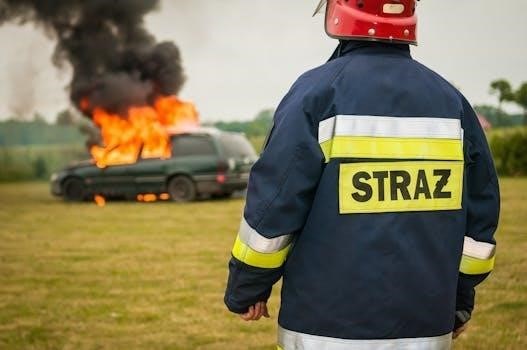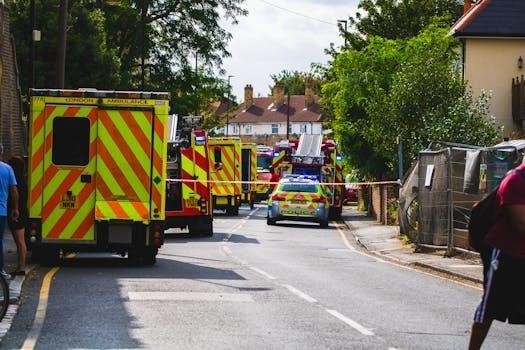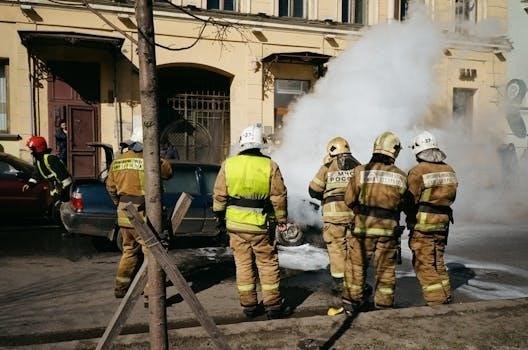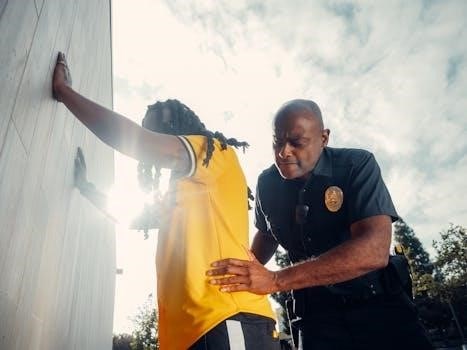Overview of the Incident Response Pocket Guide
The Incident Response Pocket Guide (IRPG) serves as a vital resource for wildland fire incident response. It establishes standards through guidelines and best practices. This pocket-sized guide offers crucial information on various aspects of incident management. The IRPG is used by firefighters across different levels and agencies.
Purpose and Scope

The primary purpose of the Incident Response Pocket Guide (IRPG) is to furnish operational personnel, ranging from Firefighter Type 2 to Division Supervisor and initial attack/extended attack Incident Commanders, with a readily accessible job aid and training reference. It is intended to serve as a quick reference for personnel involved in wildland fire incidents. Additionally, the IRPG is designed to have a secondary application for all-hazard incident response situations, making it a versatile tool for various emergency scenarios. The guide aims to standardize response efforts by providing critical information on operational engagement, risk management, fire environment, all-hazard response, and aviation management. The IRPG serves as a compilation of guidelines, checklists, and best practices. The scope of the IRPG encompasses a broad range of wildland fire operations, offering a concise and practical resource for personnel working on the fireline. It is meant to be carried by all wildland firefighters and other relevant personnel, ensuring that essential information is always at hand. The guide also supports training by providing a reference for standard procedures.

Key Content Areas
The Incident Response Pocket Guide covers vital topics including operational engagement guidelines, risk management protocols, all-hazard response information, and aviation management procedures. These sections provide essential guidance for safe and effective incident response.
Operational Engagement Guidelines
The Operational Engagement Guidelines section of the Incident Response Pocket Guide (IRPG) focuses on establishing clear standards for wildland fire incident response. This section emphasizes the importance of understanding and adhering to the 10 Standard Firefighting Orders and the 18 Watch Out Situations, which are crucial for maintaining safety on the fireline. These guidelines provide a structured approach to decision-making and tactical actions during incidents, ensuring that personnel are well-informed and prepared. The IRPG promotes a culture of preparedness by outlining best practices for operational tasks. It also helps improve the effectiveness of incident response by providing a framework for communication and coordination. This section ensures that all personnel understand their roles and responsibilities during an incident. The guidelines are designed to be practical and easily applicable in the field. They assist in setting clear operational objectives and strategies. The IRPG’s emphasis on standard protocols helps reduce the risk of errors and increases the overall efficiency of response efforts. Furthermore, the guidelines support the use of checklists and protocols to make sure all steps are completed during operations. This helps in promoting a safer and more controlled environment during an incident.
Risk Management Protocols
The Risk Management Protocols section within the Incident Response Pocket Guide (IRPG) is designed to help personnel identify, assess, and mitigate risks during wildland fire incidents. This section of the IRPG outlines procedures for understanding the potential hazards associated with fire operations, and provides practical guidance on how to minimize those risks. The protocols include checklists for identifying risks, such as changing weather conditions, hazardous terrain, and the presence of dangerous materials. It provides strategies for managing these risks, helping to ensure the safety of responders and the public. This section promotes a proactive approach to risk management. It encourages personnel to continuously evaluate the environment and adjust their tactics accordingly. The Risk Management Protocols emphasize the importance of communication and coordination in managing risks. They ensure that all team members are aware of the potential dangers and how to respond to them. The IRPG’s guidelines also focus on the use of personal protective equipment and safe work practices. They provide a framework for creating a safer working environment, and reducing the likelihood of accidents. This section of the IRPG is essential for maintaining the overall safety and efficiency of incident response operations.
All-Hazard Response Information
The All-Hazard Response Information section of the Incident Response Pocket Guide (IRPG) broadens its applicability beyond just wildland fires. This segment provides guidance on responding to various types of incidents, acknowledging that first responders may encounter diverse emergency situations. It includes protocols and checklists relevant to events such as medical emergencies, hazardous materials incidents, and search and rescue operations. This section emphasizes the importance of adaptability and preparedness when facing unforeseen events, providing a foundation for a unified response. The all-hazard approach helps personnel apply core incident management principles regardless of the specific nature of the incident. The IRPG offers a framework for communication, coordination, and resource allocation across different types of emergencies, ensuring a seamless response. This section stresses the need for awareness of the local environment and the potential risks. It highlights the importance of understanding the specific challenges associated with different incidents and adapting response strategies accordingly. The all-hazard information aims to enhance the overall readiness of responders. It ensures that they are equipped to manage a wide spectrum of emergencies, thus improving their effectiveness during any event. It is an important part of the IRPG.
Aviation Management Procedures
The Aviation Management Procedures section within the Incident Response Pocket Guide (IRPG) focuses on the safe and effective use of aircraft during incident operations; This section details guidelines for helicopter and fixed-wing aircraft operations, addressing critical aspects such as communication protocols, landing zone selection, and air-to-ground coordination. The IRPG emphasizes the need for qualified personnel to manage aviation resources, ensuring that all operations align with established safety standards. It covers procedures for medical evacuations, cargo transport, and aerial reconnaissance, providing clear instructions for each type of mission. This segment underscores the importance of understanding weather conditions and their impact on aviation operations. It includes checklists for pre-flight briefings and emergency procedures, helping to mitigate risks associated with aerial activities. The guide highlights the importance of communication among air crews, ground personnel, and incident command, promoting a unified approach to aviation management. The IRPG establishes protocols for the use of specialized equipment, such as water buckets and retardant delivery systems. It further ensures that all personnel involved in aviation operations are aware of potential hazards. This section aims to promote a culture of safety in all aviation activities.

Updates and Revisions
The Incident Response Pocket Guide is regularly updated to reflect current best practices. Revisions incorporate lessons learned from past incidents. These updates ensure the guide remains a relevant and effective tool for incident response. The latest edition includes new checklists and guidelines.

2022 Edition Changes
The 2022 edition of the Incident Response Pocket Guide (IRPG) introduces several key updates designed to enhance its usability and effectiveness in the field. A notable addition is a ruler integrated into the inside of the front cover, providing a convenient measuring tool. Furthermore, a critical addition is the inclusion of a dedicated Mental Health Checklist, recognizing the importance of addressing the psychological well-being of responders. Another significant update is a page devoted to Night Operations, providing specific guidance and considerations for incidents occurring during nighttime hours. The 2022 IRPG also incorporates a Firing Checklist, supporting safer and more efficient firing operations. These changes reflect a commitment to continuous improvement and address identified needs within the wildland firefighting community. Additionally, the updated guide incorporates refined language and updated procedures, ensuring consistency with current operational standards. The 2022 edition seeks to provide a more comprehensive and user-friendly resource for all levels of responders. The inclusion of these new elements is meant to improve both the safety and efficacy of incident response, making the IRPG a more valuable tool for personnel in the field. It also serves as a testament to the IRPG’s evolution in response to the evolving demands of incident management.
Availability and Access
The Incident Response Pocket Guide (IRPG) is widely available through various channels to ensure accessibility for all wildland fire personnel. The primary method of access is through the National Wildfire Coordinating Group (NWCG) publications system. The IRPG is distributed in both hardcopy print and digital formats, catering to diverse user preferences. The print version can be ordered through the Great Basin Cache via the NWCG NFES Catalog, often available at supply caches. Digital versions, typically in PDF format, can be downloaded from NWCG web portals and websites, offering easy access on computers, tablets, and mobile devices. The digital format also allows for features like full-text search, enhancing its usability. Moreover, some third-party vendors and retailers also stock the IRPG, particularly the print editions. The guide is typically available for purchase or distribution to personnel involved in wildland fire management. The NWCG aims to make this critical resource readily available, recognizing that immediate access is essential during incident response. The guide is distributed to state, local, federal, tribal, and territorial wildland firefighters in the United States. The multiple avenues of access ensure that all those needing the IRPG can procure it quickly, regardless of their location or preferred format. This focus on accessibility is key to its effectiveness as a tool in the field.
Digital and Print Formats
The Incident Response Pocket Guide (IRPG) is intentionally offered in both digital and print formats to accommodate the diverse needs and preferences of users in the field. The print format provides a tangible, easily portable resource, often carried in a pocket for quick reference during incidents. These printed guides are durable and designed for rugged use in demanding environments. The digital format, typically a PDF, allows for enhanced accessibility and functionality. Digital versions can be downloaded and stored on various devices, such as smartphones, tablets, and laptops, providing a readily available resource with features like full-text search and bookmarking capabilities. The digital format also allows for updates to be distributed efficiently, ensuring users have the most current information. Users can choose between the orange or white background PDF versions for printing, depending on their preferences. The flexibility of having both formats ensures that personnel can access the IRPG in the manner that best suits their needs. This dual approach recognizes the importance of having a physical reference, as well as the benefits of technology. The availability of digital formats also supports remote access and distribution for those who need to obtain the guide on the go.